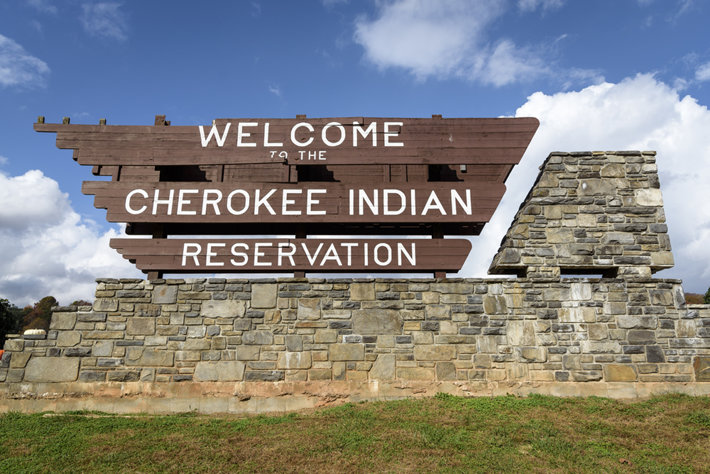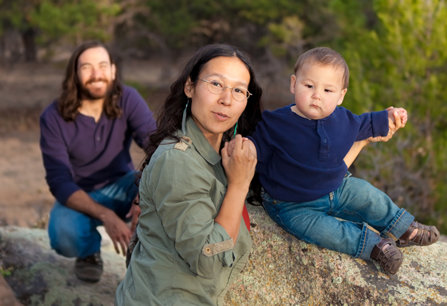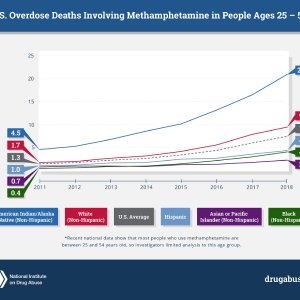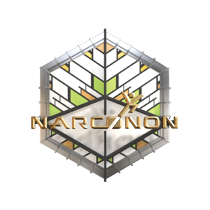Cherokee Nation Sets the Example for What to Do with Opioid Pharma Settlement Dollars

In the late-20th century, several states settled major cases against tobacco corporations for the corporations’ role in lying to the American public about the health risks of consuming tobacco. During such litigation, several states negotiated cash settlements to the tune of billions of dollars. Unfortunately, the millions of victims of tobacco corporations’ malfeasance rarely benefited from those legal victories, as states usually added settlement monies to their budget surpluses. Today, the Cherokee Nation in Oklahoma sets an example for what plaintiffs should do with settlement dollars.
Oklahoma’s Cherokee Nation Announces Plans for New Treatment Center
Headquartered in Tahlequah, Oklahoma, the Cherokee Nation is the largest Native American tribe in the U.S., with over 440,000 citizens. In February of this year, the Nation released a statement announcing the tribe was using $18 million of its $98 million settlement with pharma manufacturers and distributors to provide no-cost treatment for Cherokee citizens struggling with drug and alcohol abuse.

The 17,000-square-foot treatment center will have 50 beds. The tribe will operate the center and will not charge any fees for tribal members who seek treatment there. Critically, the $18 million for the center is just a part of the $73 million the tribe plans to spend building facilities across its reservation to address behavioral health needs, including drug treatment and drug use prevention services. That means, of the $98 million in its legal settlement, the Cherokee Nation is using 74% of the funds to address the years-long addiction crisis that has ravaged the tribe.
“These will truly be drug treatment centers developed by Cherokees, for Cherokees,”
Another $5 million is being earmarked for a tribal endowment to help pay for Cherokee citizens to attend college and grad school to become behavioral health therapists and medical professionals, roles that will be needed to staff the upcoming facilities. “These will truly be drug treatment centers developed by Cherokees, for Cherokees,” says Cherokee Nation Principal Chief Chuck Hoskin. “It’s not a federal government-imposed facility.”
The Cherokee Nation is essentially making the opioid manufacturers that created the drugs that addicted many Cherokee citizens pay for the treatment programs that will now help those same citizens get clean. That is how monies won in pharma litigation should be spent. “The symbolism is also important, which is we are paying for this over the next five years and making the opioid industry pay for everything,” says Hoskin. “There’s a real sense of justice just making that statement.”
“The symbolism is also important, which is we are paying for this over the next five years and making the opioid industry pay for everything,”
While the Cherokee Nation litigated against several pharma giants, the primary defendants that agreed to settle were McKesson Corporation, Cardinal Health, AmerisourceBergen Drug Corporation (pharma distributors), and Johnson & Johnson (a pharma manufacturer).
Traditional Cherokee Treatment for Tribal Members
Cherokee Nation officials have signaled their excitement about plans for the treatment center, as they intend to staff the center with all-tribal member citizens. Further, the center will combine modern treatment methods and traditional Cherokee healing approaches, such as bead-making, talking circles, and stickball. Hoskin spoke about the importance of ensuring Cherokee citizens access treatment methods that best fit their cultural practices and beliefs. “A person in recovery needs to know they’re not alone. If you’re Cherokee, there’s a real cultural reason why you’re not alone. We share traditions, even if those traditions in some families haven’t been practiced in generations.” According to Hoskins, construction will begin on the facility this year.
A Community Ravaged by the Opioid Epidemic
The Cherokee Nation was the Oklahoma demographic hit hardest by the opioid epidemic. “For over two decades, the opioid epidemic has plagued the Cherokee Nation reservation and impacted every facet of our tribe and society. Hundreds of Cherokee Nation citizens have died from overdoses, and tens of thousands more have suffered,” says Hoskin. “It caused generational trauma and put the future of our Nation at risk. Nearly a third of the opioids distributed in the state in recent years were shipped into Cherokee Nation because irresponsible drug makers and distributors preyed on the rural communities across our reservation.” And while the Cherokee Nation can begin to heal its community with the help of the upcoming treatment center, other Indigenous communities have not yet secured settlement dollars from pharma giants to fund similar treatment plans.
According to the National Institute on Drug Abuse, Native Americans, particularly Indigenous youths, struggle with substance abuse at rates significantly higher than other young demographics. Higher exposure rates and repeat use of such drugs put these individuals at greater risk of using extremely potent opioids. These drugs can create life-altering addiction and even cause fatal overdoses.
Considering overdoses, the Centers for Disease Control and Prevention reports the drug-related death rate among indigenous populations has skyrocketed in recent years. According to the data, the death rate spiked by 39% for American Indians and Alaska Natives (AI/AN) between 2019 and 2020. Also, the overdose death rate for AI/AN women between 25 and 44 is nearly two times that of white women in that same age bracket.
The CDC identified one of the critical problems facing Indigenous Americans is the lack of access to treatment, which is why the upcoming treatment center in Tahlequah is such good news for the Cherokee Nation. According to the CDC, currently, fewer than ten percent of Indigenous Americans who struggle with drug addiction ever receive treatment. Hopefully, that will change with the completion of the new facility and others like it.
The Cherokee Nation Sets an Example for Others to Follow

The story out of Tahlequah, Oklahoma may be just one story, but it acts as a beacon of hope and inspiration for what other tribes, groups, counties, cities, and states should do if and when they secure settlement victories against the pharma giants that helped create the opioid epidemic.
It’s heartening for entire groups to organize and take action to make drug treatment options accessible for those addicted. If you know someone using drugs and alcohol and who cannot stop using them on their own, please help them enter a residential drug and alcohol addiction treatment center as soon as possible. Please don’t wait until it is too late.
Sources Cited:
- USNews. “Cherokee Nation Announces Plans for $18M Treatment Center.” U.S. News, 2023. usnews.com
- AP. “Cherokee Nation reaches $75M settlement with drug companies.” AP News, 2021. apnews.com
- TDP. “CN unveils drug treatment center.” Tahlequah Daily Press, 2023. tahlequahdailypress.com
- NIDA. “Higher rate of substance use among Native American youth on reservations.” National Institute on Drug Abuse, 2018. nida.nih.gov
- CDC. “Overdose death rates increased significantly for Black, American Indian/Alaska Native people in 2020.” Centers for Disease Control and Prevention, 2022. cdc.gov


